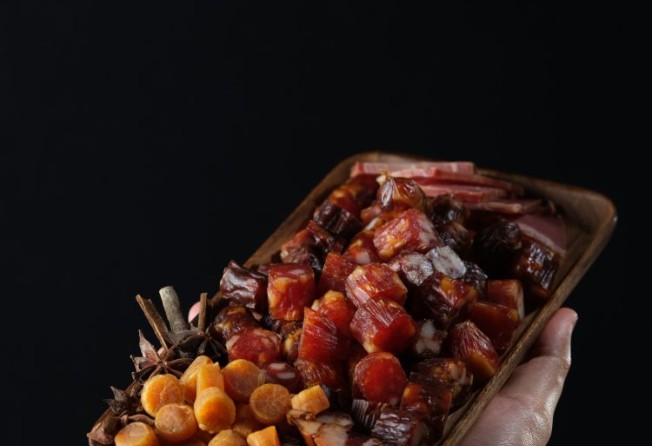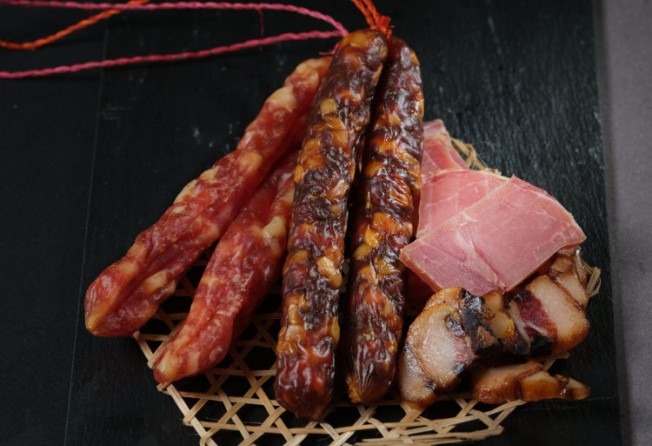
What’s the best way to cook lap cheong? Inside the humble Chinese dried sausage’s centuries-old history, plus recipes and tips from Hong Kong experts
- Chinese restaurant Yung Kee in Hong Kong, known for its signature roasted goose, used goose liver in sausages in the 1970s instead of the more common duck liver
- The popular comfort food – easily prepared in a rice cooker – can be paired with vodka or Chinese Mao-tai, and there are even healthy lean Canadian pork versions too

The Chinese dried sausages known as lap cheong have existed for about a millennia, since the Wei and Jin dynasties, according to the history books. The technique of stuffing sausages was first recorded in the Qimin Yaoshu, the agricultural chronicle credited to official Jia Sixie and dated to AD544 (literally translated as Essential Techniques for the Welfare of the People).

If you grew up as a member of the Chinese diaspora, lap cheong and traditional liver sausages offered a ready lifeline to Hong Kong. Simply prepared by being thrown into a rice cooker, this accessible comfort food is easily transportable and, most importantly, sold in Asian grocery stores worldwide.
Many other cultures have their way of preserving meats for the winter and storage, but the evolution of this sweet, fatty dried variety is a distinctly regional. “The southern provinces, including Hong Kong, are known for making and utilising condiments in food,” says KC Koo, owner and founder of small-batch food importer and manufacturer Fancook Production Company. “Liver sausages are definitely a Hong Kong innovation. The most recent version, in the last decade or so, is lap cheong interspersed with dried oysters.”
Yvonne Kam, the third-generation CFO of Yung Kee, the Hong Kong roast meat and Cantonese dining institution that recently reopened after a complete refurbishment, agrees.

“At Yung Kee, we started making our own Chinese sausages at the end of the 1970s. Back then, duck liver was commonly used for liver sausages so we were using duck. However, we didn’t think the taste was ideal despite using the highest quality liver we could find, and since roasted goose was our signature dish and goose was considered more premium poultry, we decided to use goose liver instead as it gave a stronger taste and finer aroma. As a result, goose liver sausage was first invented by Yung Kee.”
Evolving with the times, the renowned restaurant made various versions of lap cheong to cater to changing tastes and culinary values.
“Yung Kee also catered to the trend of healthy eating, and cured lean pork sausage was launched in the 1980s. In 2000, we upgraded the pork we used for the product. Instead of sourcing from China, we are now using pork from Canada where supply is more stable and the pork is of a higher quality,” Kam adds.
Every year as autumn approaches, Fancook’s Koo commissions a local dried sausage maker for several versions of lap cheong and liver sausages to his specifications. He believes that making a quality product is a lost art.

“All my vendor’s staff are of a certain age,” says the gourmand. “They’re experts at what they do. They will adjust the recipe to the slightly changing quality of the spirits and condiments used.
“It’s also tough work. The best time to cure and air the product is before midday and the craftsmen have to wake up at 3am to start work every day during production.”
According to Koo, quality liver sausages have a unique bittersweet quality to them. “This flavour can easily ruined by refrigeration and bad storage,” he adds. “When the weather is dry and cold in Hong Kong, you should be able to hang these by the window to keep curing. It’s only when the humidity shoots up should the sausages go into the fridge.”
Fun fact: the inclusion of dried meats in turnip puddings during Lunar New Year was traditionally to use up all the cured meats before spring.
So, what’s the best way to eat Chinese dried meats? “With steamed rice,” says Koo. “And once it’s cooked, clear spirits such as vodka or Chinese Mao-tai are a perfect pairing, too.”

Koo’s tips for cooking dried sausages or lap cheong
1. Liver sausages are the easiest – you just place them into a pot with uncooked rice and cook it all in one go. The flavour of the sausages will be absorbed into the rice. Because there is a bit of cooking and fat involved, dried duck should be prepared the same way as liver sausages.
2. You should wait for the water to boil in the uncooked rice before adding the dried sausages to the pot. The heat of the rice should cook the sausages. The same goes for sliced cured meat.